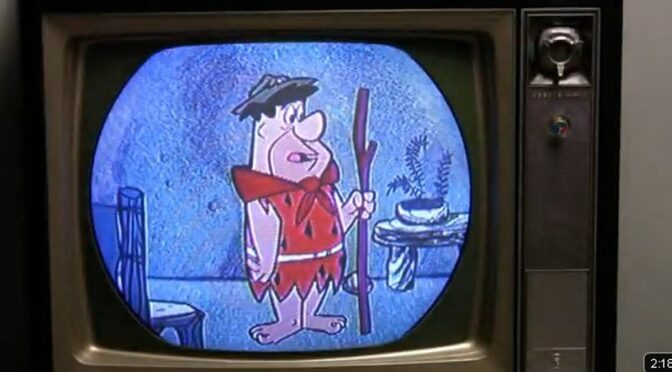So many outdoor videos on YouTube, so little time to sort the entertaining from the “Hey-look-at-me!” Fortunately, that’s one of the services we provide — so suffer through the latter and direct you to the former.
We watch a video: if we like it and think you will, too, we write a short review. If we watch it and don’t like it, well, if it’s really egregious we might write about it to let you know what you’re not missing. Otherwise, we move on to the next. The good news: there’s enough decent stuff out there to keep us in business.
While this page is mostly about videos, it’s also about podcasts, books and magazines. Some of the entries are practical in nature — gear reviews, how-tos — others are about the experience of being outdoors, virtual escapes you can take when you don’t have time to take your own.
We’ve cataloged these entries by the following subjects:
- Hike/trip recommendations
- Adventure
- People
- General media
- Gear
- Nature
- Skills
- Health & Safety
- Lifestyle
We will continually add to this list.
Hike/Trip recommendations
The Benton MacKaye Trail on YouTube
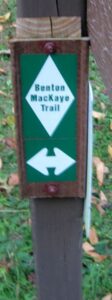 Of late, we’ve been thinking of the 287.6-mile Benton MacKaye Trail, which, like the Appalachian Trail finds its southern terminus at Springer Mountain, Ga., then runs north into the Smokies. Once we started thinking about the BMT, we realized how little we knew about the trail. So we turned to our preferred YouTube explorers for some enlightenment. Here are three videos that make a nice introduction:
Of late, we’ve been thinking of the 287.6-mile Benton MacKaye Trail, which, like the Appalachian Trail finds its southern terminus at Springer Mountain, Ga., then runs north into the Smokies. Once we started thinking about the BMT, we realized how little we knew about the trail. So we turned to our preferred YouTube explorers for some enlightenment. Here are three videos that make a nice introduction:
- Leonides: 7-day, 7-part series. The daily videos are in the 15- to 30-minute range and take a chronological approach, which is especially good if you may only be able to hike portions of the trail. Helpful, too, because his series is recent, shot in late 2020. Find it here.
- JBenHikes: I can do that trail in six episodes, JBenHikes appears to proclaim. These episodes tend to be a little shorter, with more emphasis on scenery than chatting. The beginning of his last episode in the series shows that thru-hike aren’t all sunny escapades: he reports in the wee hours from his tent, which is being buffeted by intense winds atop Mt. Sterling in the Smokies. Especially good video quality. Also shot late last year. Find it here.
- Evan’s Backpacking Videos: 14 episodes. Evan’s series starts with planning and training videos before getting on the trail. Each episode also has a theme (“Making Outdoor YouTube Videos with an iPhone 6,” “The Doctor Knows Best About Blister Care”), which adds an additional bit of info to each episode. Lots of great information about the trail and the experience of thru-hiking it peppered throughout. One downside: it was filmed in 2016, making it nearly four years old. Find it here. 04.27.23
Evan on the Foothills Trail
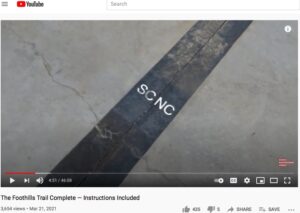 As Evan of Evan’s Backpacking Videos notes at the beginning of his 46-minute 8-second video of his thru-hike on the 77-mile Foothills Trail, the trail appears to be misnamed: the term “foothills,” he argues, suggests ease. This is not, he states up front, an easy trail. He also suggests it might not be a trail to attempt in bad weather. Begin the adventure with Evan here.
As Evan of Evan’s Backpacking Videos notes at the beginning of his 46-minute 8-second video of his thru-hike on the 77-mile Foothills Trail, the trail appears to be misnamed: the term “foothills,” he argues, suggests ease. This is not, he states up front, an easy trail. He also suggests it might not be a trail to attempt in bad weather. Begin the adventure with Evan here.
Waterfall hikes
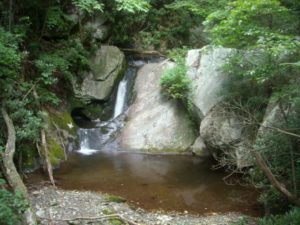
In hot weather we look for hikes that are: 1) at higher elevation; 2) involve water; 3) both.
So today, we pass along 5 YouTube videos highlighting some of the best waterfall hikes around:
- Tennessee Waterfalls | Best in the United States?, XPLR.Nash
- Waterfalls of the Smokies, Johnny on the Trail
- Top 5 Waterfall Hikes in Shenandoah National Park, William 180
- Asheville, North Carolina: 9 Easy Waterfalls to Hike, Adrienne Jones
- Best Waterfalls of North Carolina, Bill & Eric Photography
Barkley Marathons: ‘Where Dreams go to Die’
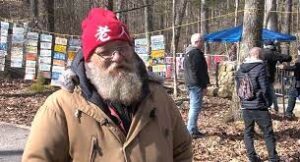 As outdoor adventures go, the Barkley Marathons certainly is among the quirkiest. For starters, it’s impetus was James Earl Ray’s 1977 escape from Tennessee’s Brushy Mountain State Penitentiary in Morgan County, Tennessee. The vexing terrain made Ray’s escape a short one, but inspired Yosemite Sam look-alike Gary Cantrell (a k a Lazarus Lake) to create a 100-mile race with … fluent rules, a mysterious registration process (more than 1,000 typically apply for the 60 slots), a 60-hour time limit, a total elevation gain of 60,000 feet and a start time that’s anytime between midnight and noon (Cantrell blows a conch shell when he decides it’s time to start). Sound challenging? Since the race began in 1986, only 15 people have finished the Barkley. (No one finished this year’s race.)
As outdoor adventures go, the Barkley Marathons certainly is among the quirkiest. For starters, it’s impetus was James Earl Ray’s 1977 escape from Tennessee’s Brushy Mountain State Penitentiary in Morgan County, Tennessee. The vexing terrain made Ray’s escape a short one, but inspired Yosemite Sam look-alike Gary Cantrell (a k a Lazarus Lake) to create a 100-mile race with … fluent rules, a mysterious registration process (more than 1,000 typically apply for the 60 slots), a 60-hour time limit, a total elevation gain of 60,000 feet and a start time that’s anytime between midnight and noon (Cantrell blows a conch shell when he decides it’s time to start). Sound challenging? Since the race began in 1986, only 15 people have finished the Barkley. (No one finished this year’s race.)
Ginger Runner Ethan Newberry captures the race’s quirky and sometimes cruel nature in “Where Dreams go to Die,” a 1 hour and 16-minute documentary on the two-race odyssey of one contestant, Gary Robbins, in his quest to tame the Barkley. Even if you aren’t an ultrarunner, you’ll appreciate the pushing-the-envelope edge of this captivating film. Check it out here.
JupiterHikes: ‘Which Trail Should I Hike?’
 It’s the first of the year, you’re contemplating your hiking goals for 2023. Is this the year you do a long trail? And if not a “long” trail (a l a Appalachian, Pacific Crest) then perhaps a sorta long hike (Benton Mackaye, John Muir)? So many questions. Questions you’ll find answered by YouTuber JupiterHikes in his 17-minute 40-second video, “Which Trail Should I Hike?” JupiterHikes has a lot of miles on the trail, and this video reflects that experience. He discusses options, he discusses different approaches. Well worth a watch — even if a long hike isn’t in your immediate future. Check it out here.
It’s the first of the year, you’re contemplating your hiking goals for 2023. Is this the year you do a long trail? And if not a “long” trail (a l a Appalachian, Pacific Crest) then perhaps a sorta long hike (Benton Mackaye, John Muir)? So many questions. Questions you’ll find answered by YouTuber JupiterHikes in his 17-minute 40-second video, “Which Trail Should I Hike?” JupiterHikes has a lot of miles on the trail, and this video reflects that experience. He discusses options, he discusses different approaches. Well worth a watch — even if a long hike isn’t in your immediate future. Check it out here.
Adventure
Dirtbag Diaries: ‘Grand Traverse’
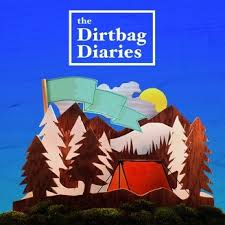 Around this time we start thinking about the year ahead, about what we hope to achieve. Thus, we start looking for motivation, for inspiration. The challenge is to find such that isn’t too on-the-nose, too first-day-of-the-rest-of-your-life. That’s probably why the tale of the Grand Traverse on the latest Outside podcast strikes such a cord. It’s not not about “goals” per se. Rather, it’s about doing something challenging that, at year’s end, you can look back at and say, “Dang! I did that! I guess I had a pretty good year.” The “that” in this case is the Grand Traverse, a 40 mile cross-country ski race in Colorado, from Crested Butte to Aspen. It started in 1997 and attracts hundreds of participants, include Pat O’Neill, who has done all 25. The podcast is mostly about O’Neill, but it provides good insight into the kind of challenging achievement you could hang a year on. Best of all, it’s not just an impressive physical accomplishment, it sounds like a lot of fun. Give a listen here.
Around this time we start thinking about the year ahead, about what we hope to achieve. Thus, we start looking for motivation, for inspiration. The challenge is to find such that isn’t too on-the-nose, too first-day-of-the-rest-of-your-life. That’s probably why the tale of the Grand Traverse on the latest Outside podcast strikes such a cord. It’s not not about “goals” per se. Rather, it’s about doing something challenging that, at year’s end, you can look back at and say, “Dang! I did that! I guess I had a pretty good year.” The “that” in this case is the Grand Traverse, a 40 mile cross-country ski race in Colorado, from Crested Butte to Aspen. It started in 1997 and attracts hundreds of participants, include Pat O’Neill, who has done all 25. The podcast is mostly about O’Neill, but it provides good insight into the kind of challenging achievement you could hang a year on. Best of all, it’s not just an impressive physical accomplishment, it sounds like a lot of fun. Give a listen here.
Sintax77: ‘Stone Shelter Camping in a Snow Storm’
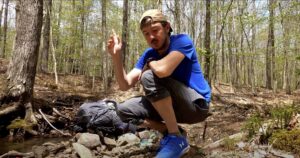 Sometimes you crave a winter backpack trip — a true winter trip, with snow and all — but it just isn’t in the cards. So you turn to the next best thing: a YouTube. In his latest video, Sintax77 takes us on a hike in New York’s 47,527-acre Harriman State Park. It’s a hike that starts under blue skies with puffs of white cloud, a dusting of snow on the ground and later spends a night in a stone shelter as a winter storm blows through leaving drifts of up to two feet. It ends with a thick blanket of snow on the ground under gorgeous blue sky. Winter backpacking at its best. Check it out here.
Sometimes you crave a winter backpack trip — a true winter trip, with snow and all — but it just isn’t in the cards. So you turn to the next best thing: a YouTube. In his latest video, Sintax77 takes us on a hike in New York’s 47,527-acre Harriman State Park. It’s a hike that starts under blue skies with puffs of white cloud, a dusting of snow on the ground and later spends a night in a stone shelter as a winter storm blows through leaving drifts of up to two feet. It ends with a thick blanket of snow on the ground under gorgeous blue sky. Winter backpacking at its best. Check it out here.
TOGR’s ‘A Quiet Place’ adventures
Looking for that quiet tranquility you seek on the trail, but are crunched for time and can’t experience it in person? Check out ‘A Quiet Place Adventures” from The Outdoor Gear Review. They’re much like the adventures TOGR’s Luke takes on his main channel, but minus the commentary. It’s amazing the difference no talking makes. These chatter-free videos have a zen-like quality; the sounds of nature are left in, the sounds of man are not. They typically run less than 20 minutes, perfect for a quick escape when you need one. Check ‘em out here.
‘Emotional Rescue’ on Mount Washington
Rescue stores are always fascinating. While they frequently contain many of the same elements — an ill-prepared hiker, ignoring the weather, attempting an adventure over one’s head — they are uniquely different. “Emotional Rescue,” which occurred roughly 13 years ago and was written about in the Summer/Fall 2018 issue of Appalachia Journal, may sound familiar in some respects, but includes two elements of particular note. One is that the rescuer, Pam Bales, pictured, was just another hiker who happened to be on the mountain at the right time and in the right place. The second element? You’ll have to read it yourself to find out. Check out the story here.
Outside: ‘A Wild Odyssey with the World’s Greatest Chef’
 We all suffer, at some point, from degree of … ennui, of a personal version what President Carter once infamously referred to as a “crisis of confidence, a malaise. When this happened to New York Times food writer Jeff Gordinier, he felt perplexingly adrift, perplexingly, because in a lot of ways he was on top of the world, at least professionally. But personally, he was a mess. Then, a unique opportunity presented itself that led him on a mostly unlikely adventure. This adventure, expertly portrayed by Outside’s Michael Roberts, underscores the power of adventure, in that it transported him from the land of the listless to the land of the vibrantly alive. A great listen, that you can find here.
We all suffer, at some point, from degree of … ennui, of a personal version what President Carter once infamously referred to as a “crisis of confidence, a malaise. When this happened to New York Times food writer Jeff Gordinier, he felt perplexingly adrift, perplexingly, because in a lot of ways he was on top of the world, at least professionally. But personally, he was a mess. Then, a unique opportunity presented itself that led him on a mostly unlikely adventure. This adventure, expertly portrayed by Outside’s Michael Roberts, underscores the power of adventure, in that it transported him from the land of the listless to the land of the vibrantly alive. A great listen, that you can find here.
Outside: A true van tale
Paul Harvey, for you youngsters, was a radio commentator from years ago who shared tales that told “the rest of the story.” Some were stories you thought you knew. Others were stories that weren’t what they appeared to be on the surface. This week’s Outside podcast on Emily Pennington is a bit of a Paul Harvey. Pennington set out in 2020 to visit all 63 U.S. National Parks. She was expecting a somewhat light-hearted romp as she shucked her job, hopped in a van and hit the road. That’s not exactly what happened (the fact she did this in locked-down 2020 should give you a clue). But neither is her story one of one disaster after another. Rather, it’s a pretty straight-forward look at what it’s really like to live in a van and vagabond for a year. Give a listen here.
Bryan Delay: Smokies in Winter
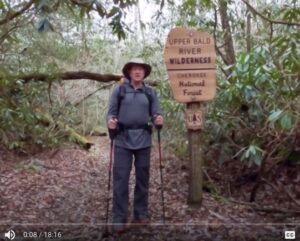 You like the idea of a winter overnight escape to the Smokies. You also like the idea of staying warm and dry. So why not tag along with our buddy Bryan Delay (of “Backpacking with Bryan Delay”) and his son Nathan on a trip in December. They start at Davenport Gap and hike south on the Appalachian Trail to Cosby. It’s a trip full of blue skies, a couple inches of snow on the ground, and lots and lots of the Great Smoky Mountains. A wonderful 16 minute and 4 second escape (be sure to check out the sweet shelters). Find it here.
You like the idea of a winter overnight escape to the Smokies. You also like the idea of staying warm and dry. So why not tag along with our buddy Bryan Delay (of “Backpacking with Bryan Delay”) and his son Nathan on a trip in December. They start at Davenport Gap and hike south on the Appalachian Trail to Cosby. It’s a trip full of blue skies, a couple inches of snow on the ground, and lots and lots of the Great Smoky Mountains. A wonderful 16 minute and 4 second escape (be sure to check out the sweet shelters). Find it here.
YA adventure books for camping
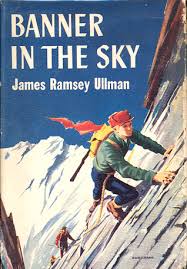 A few years ago I disappeared for a night into the Birkhead Mountain Wilderness to simply escape. I didn’t hike in far — about 3 miles — and camp was pitched by 4. What did I do with my afternoon and evening? I read. I finished a book I’ve been reading exclusively on backpack trips for about six months, “Banner in the Sky,” by James Ramsey Ulman. Based in Switzerland in 1865 (the book, which won the Newberry Award, was published in 1955), it’s about 16-year-old Rudy Metz, who is determined to conquer the mountain that claimed his dad. It’s a wonderful tale, perfect for backpacking in part because it’s about adventure, in part because it doesn’t weigh much. In fact, some of my favorite backpacking books fall into Banner’s Young Adult adventure category, books by the likes of Canadian author Farley Mowat (“Lost in the Barrens”) and contemporary American author Roland Smith (“Jaguar,” “Sasquatch,” the Peak series). Though geared toward young adults, these authors don’t pander: the stories are good, crisp adventures designed to engage readers regardless of age. And I find they’re perfect for transitioning from your own adventure to someone else’s. 04.20.23
A few years ago I disappeared for a night into the Birkhead Mountain Wilderness to simply escape. I didn’t hike in far — about 3 miles — and camp was pitched by 4. What did I do with my afternoon and evening? I read. I finished a book I’ve been reading exclusively on backpack trips for about six months, “Banner in the Sky,” by James Ramsey Ulman. Based in Switzerland in 1865 (the book, which won the Newberry Award, was published in 1955), it’s about 16-year-old Rudy Metz, who is determined to conquer the mountain that claimed his dad. It’s a wonderful tale, perfect for backpacking in part because it’s about adventure, in part because it doesn’t weigh much. In fact, some of my favorite backpacking books fall into Banner’s Young Adult adventure category, books by the likes of Canadian author Farley Mowat (“Lost in the Barrens”) and contemporary American author Roland Smith (“Jaguar,” “Sasquatch,” the Peak series). Though geared toward young adults, these authors don’t pander: the stories are good, crisp adventures designed to engage readers regardless of age. And I find they’re perfect for transitioning from your own adventure to someone else’s. 04.20.23
People
Conrad Anker on ‘Wild Ideas’
 As the show notes for the latest episode of “Wild Ideas Worth Living” succinctly state, “Conrad Anker is a legendary mountaineer and one of the most prolific explorers alive today.” On a camping trip when he was 15 he decided that exploring the outdoors was what he wanted to do with his life, and for the past 45 years he’s done just that. His climbing resume (including three Everest summits) is unparalleled. More than that, he’s simply a decent, well-rounded guy. If you’re not familiar with Anker, the latest 30-minute episode of “Wild Ideas Worth Living” is not only a great introduction, it has a bit to offer to folks who have closely followed his career (hint: it has to do with his pre-expedition preparation).. Give a listen to “The Wisdom of Expeditions with Conrad Anker” here.
As the show notes for the latest episode of “Wild Ideas Worth Living” succinctly state, “Conrad Anker is a legendary mountaineer and one of the most prolific explorers alive today.” On a camping trip when he was 15 he decided that exploring the outdoors was what he wanted to do with his life, and for the past 45 years he’s done just that. His climbing resume (including three Everest summits) is unparalleled. More than that, he’s simply a decent, well-rounded guy. If you’re not familiar with Anker, the latest 30-minute episode of “Wild Ideas Worth Living” is not only a great introduction, it has a bit to offer to folks who have closely followed his career (hint: it has to do with his pre-expedition preparation).. Give a listen to “The Wisdom of Expeditions with Conrad Anker” here.
Media in general
Carving a nitch on YouTube
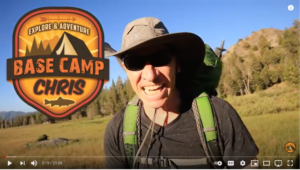 It must be tough being a YouTuber in the adventure realm: so many people doing essentially the same thing. How to distinguish yourself? Steve Wallis has made a good name for himself with his series of stealth camping episodes: stealth camping in an airport parking lot, under a bridge, in a wrecked trail. Others, such as WildBeare, use stunning video and a keen eye to make even the mundane marvelous. Then there’s Base Camp Chris. We’ve long liked Chris’s quick overnights near his Nevada home. Nice, tight escapes.
It must be tough being a YouTuber in the adventure realm: so many people doing essentially the same thing. How to distinguish yourself? Steve Wallis has made a good name for himself with his series of stealth camping episodes: stealth camping in an airport parking lot, under a bridge, in a wrecked trail. Others, such as WildBeare, use stunning video and a keen eye to make even the mundane marvelous. Then there’s Base Camp Chris. We’ve long liked Chris’s quick overnights near his Nevada home. Nice, tight escapes.
But about nine months ago Chris apparently felt the need to better distinguish himself from the masses. So he started telling stories around the campfire, the kind of stories we tell around the campfire to keep anyone within earshot of getting a good night’s sleep. Some involve Big Foot-type characters, some involve people who went into the woods — and never came back. Most are reportedly based in fact, with some including recored 911 calls, some news clippings, some interviews. His latest? On the Missouri Monster (“Momo” to the locals), which you can listen to, if you dare, here.
‘The Ginger Runner’
 Technically, the “The Ginger Runner” YouTube channel is about trail running. But isn’t trail running really just fast hiking? Among the things we love about “The Ginger Runner”:
Technically, the “The Ginger Runner” YouTube channel is about trail running. But isn’t trail running really just fast hiking? Among the things we love about “The Ginger Runner”:
- Shoe reviews. If you’re into lightweight hiking shoes, you will find no better source of information than “The Ginger Runner” reviews of trail running shoes. Recent reviews include The North Face Flight Vective, TNF’s Vective Endurance, the Saucony Peregrine 11, the Hoka One One Mach 4.
- Great trails. A recent favorite, the 93-mile Wonderland Trail circumnavigating Washington’s Mount Rainier. So what if the episode is about recent attempts to set new FKTs (fastest known times; 18 hours, 49 minutes, 11 seconds for the Wonderland!), but you get to see the entire trail, some of it at night!
- Life on the trail (albeit in the fast lane).
- Great visuals. The camera work is exceptional, as is the storytelling.
Check out The Ginger Runner YouTube videos here. Also available in podcast form here.
Elsa Rhae: ‘First Time Backpacker’
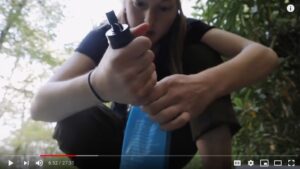 Lots of people make videos, few were born to do so. Elsa Rhae is one of the latter. We stumbled upon her “First Time Backpacker” video by accident when the video we were watching ended and hers began before we could switch channels. Good thing. Elsa is no stranger to outdoor living: she and her partner travel the country, living in a 13-foot Scamp trailer. “First Time Backpacker” is her first time backpacking: 42 miles in 4 days on the AT through the Smokies. She gets a great tip from her shuttle driver on how to start a long hike to avoid injury (hike the first 15 minutes at an almost unbearably slow pace, the next 15 slight less slowly, then take a 5 minute break). She shows how she made a gel that she used for nutrition on the trail, she’s judicious with her video. She has great hiking tips, and shares her thoughts on the gear that worked for her. Really, one of the best outdoor videos we’ve seen. Check it out here.
Lots of people make videos, few were born to do so. Elsa Rhae is one of the latter. We stumbled upon her “First Time Backpacker” video by accident when the video we were watching ended and hers began before we could switch channels. Good thing. Elsa is no stranger to outdoor living: she and her partner travel the country, living in a 13-foot Scamp trailer. “First Time Backpacker” is her first time backpacking: 42 miles in 4 days on the AT through the Smokies. She gets a great tip from her shuttle driver on how to start a long hike to avoid injury (hike the first 15 minutes at an almost unbearably slow pace, the next 15 slight less slowly, then take a 5 minute break). She shows how she made a gel that she used for nutrition on the trail, she’s judicious with her video. She has great hiking tips, and shares her thoughts on the gear that worked for her. Really, one of the best outdoor videos we’ve seen. Check it out here.
Media Playlists
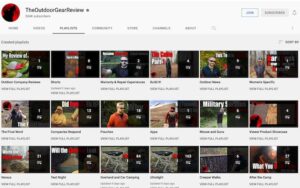 The alert popped up on YouTube: a new video was available from The Outdoor Gear Review. It was short, less than 10 minutes, and a gear review in a topic I’m particularly interested in on the trail: sitting. Specifically, sitting comfortably at the end of a long day. This review was of Big Agnes’s Skyline UL Stool, and overall, the reviewer liked it. Comfortable, if a little pricey ($99). But it was deemed light enough for backpacking (1 pound, 4 ounces), and that led me to wonder what other gear TOGR’s Luke had tested that you could take backpacking. A lot it turned out: 163 items, to be exact. And I found that information quickly because Luke does a good job of categorizing his videos; under “Ultralight” (where the stool was parked) I found reviews on everything from “Flashlights, Lanterns, Etc.” (78), to “Military Surplus” (249), to “Backpacks / Packs – Civilian & Military” (177). If you want a good gauge of how seriously a vlogger takes their craft, look no further than their playlist. Provided they have one.
The alert popped up on YouTube: a new video was available from The Outdoor Gear Review. It was short, less than 10 minutes, and a gear review in a topic I’m particularly interested in on the trail: sitting. Specifically, sitting comfortably at the end of a long day. This review was of Big Agnes’s Skyline UL Stool, and overall, the reviewer liked it. Comfortable, if a little pricey ($99). But it was deemed light enough for backpacking (1 pound, 4 ounces), and that led me to wonder what other gear TOGR’s Luke had tested that you could take backpacking. A lot it turned out: 163 items, to be exact. And I found that information quickly because Luke does a good job of categorizing his videos; under “Ultralight” (where the stool was parked) I found reviews on everything from “Flashlights, Lanterns, Etc.” (78), to “Military Surplus” (249), to “Backpacks / Packs – Civilian & Military” (177). If you want a good gauge of how seriously a vlogger takes their craft, look no further than their playlist. Provided they have one.
‘Trailside’
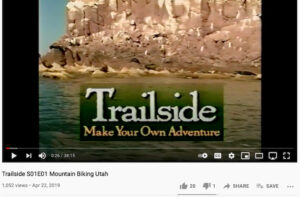 Before there was Darwin, before Dixie, before the legions of YouTube adventure videographers, there was “Trailside: Make Your Own Adventure.” Trailside was a half-hour adventure show that ran on PBS beginning in 1993. Its original host was John Viehman, who was editor of Backpacker magazine at the time. Viehman would take viewers on a variety of adventures around the globe. The emphasis was on making the adventures accessible, which Viehman managed to pull off weekly. A total of 154 episodes were produced with a variety of other hosts after Viehman left to start a similar show, “Anyplace Wild.” The show was pioneering in its “you-are-there” approach, regardless of whether they were kayaking Class IV water, caving or ice climbing.
Before there was Darwin, before Dixie, before the legions of YouTube adventure videographers, there was “Trailside: Make Your Own Adventure.” Trailside was a half-hour adventure show that ran on PBS beginning in 1993. Its original host was John Viehman, who was editor of Backpacker magazine at the time. Viehman would take viewers on a variety of adventures around the globe. The emphasis was on making the adventures accessible, which Viehman managed to pull off weekly. A total of 154 episodes were produced with a variety of other hosts after Viehman left to start a similar show, “Anyplace Wild.” The show was pioneering in its “you-are-there” approach, regardless of whether they were kayaking Class IV water, caving or ice climbing.
Oddly, despite only dating back to the 1990s, episodes are hard to find. Recently, we stumbled onto several episodes on the Trailside YouTube Channel. Check ‘em out here.
‘Escape’
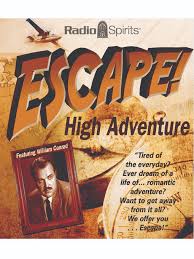 World War II had ended, America was easing into a time of prosperity, of settling down, of committing, gladly, to a 9-to-5 work-a-day routine. And yet, something was missing during this time of milk and honey. While no one pined for the horrors of war, there was an element of adventure that was now missing from most Americans’ lives. So in 1947 CBS launched a radio series called “Escape,” which each week told swashbuckling tales of adventure, from diving for gold in Paraguay, to the story of the second man to scale Mount Everest, to the plight of boat wreck survivors caught tantalizingly within sight of shore, but unable to make landfall. The show’s opening captured the restless sense of the times for many: “Tired of the everyday grind? Ever dream of a life of romantic adventure? Want to get away from it all?” And then, “Escape! Designed to free you from the four walls of today for a half-hour of high adventure!”
World War II had ended, America was easing into a time of prosperity, of settling down, of committing, gladly, to a 9-to-5 work-a-day routine. And yet, something was missing during this time of milk and honey. While no one pined for the horrors of war, there was an element of adventure that was now missing from most Americans’ lives. So in 1947 CBS launched a radio series called “Escape,” which each week told swashbuckling tales of adventure, from diving for gold in Paraguay, to the story of the second man to scale Mount Everest, to the plight of boat wreck survivors caught tantalizingly within sight of shore, but unable to make landfall. The show’s opening captured the restless sense of the times for many: “Tired of the everyday grind? Ever dream of a life of romantic adventure? Want to get away from it all?” And then, “Escape! Designed to free you from the four walls of today for a half-hour of high adventure!”
Most of the weekly stories were adaptations of works by noted authors, including F. Scott Fitzgerald, Rudyard Kipling and H.G. Wells. And the shows starred some of the top radio actors of the day, including William Conrad, John Dehner and Barney Phillips. The tales could be a little over-the-top by today’s standards, but in the context of the emerging Cold War, they can be extremely entertaining. Think half-hour radio versions of Indiana Jones. And they were certainly well-received at the time: 228 episodes were produced before the series ended in 1954.
Need a little escape from the four walls of your today? Learn more about the series here, download all 228 episodes here.
‘The First 40 Miles’
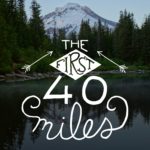 Before you get excited and ask, “The First 40 Miles is back?” it’s not. But thankfully it lives on, and that’s great news if you’re new to backpacking and eager to pick up a few tips. After 214 episodes — more than four years’ worth — Heather and Josh Legler discontinued their popular podcast aimed at beginning backpackers more than two years ago. It lives on in the ether, though, and you can catch every episode here.
Before you get excited and ask, “The First 40 Miles is back?” it’s not. But thankfully it lives on, and that’s great news if you’re new to backpacking and eager to pick up a few tips. After 214 episodes — more than four years’ worth — Heather and Josh Legler discontinued their popular podcast aimed at beginning backpackers more than two years ago. It lives on in the ether, though, and you can catch every episode here.
Gear
Shug: ‘How Hammocks Changed My Life’
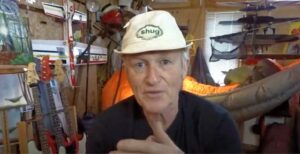 There’s a lot of hyperbole on YouTube, especially with outdoor videos where there’s competition aplenty to see who can out-outdoors whom. Not with Shug, aka Shugemery, aka Sean Emery. Shug grew up in Charlotte, resides now in Minnesota and has been a performer all his life (including a stint with Ringling Brothers). He’s also an avid explorer, so when Shug says hammocks changed his life, you can bet it’s a statement worthy of pursuing. Shug tried his first hammock in 2006 and has been committed ever since. Spend a moment with this video and find out why. It’s an especially good watch if you’ve contemplated giving hammocks a try yourself. Check it out here.
There’s a lot of hyperbole on YouTube, especially with outdoor videos where there’s competition aplenty to see who can out-outdoors whom. Not with Shug, aka Shugemery, aka Sean Emery. Shug grew up in Charlotte, resides now in Minnesota and has been a performer all his life (including a stint with Ringling Brothers). He’s also an avid explorer, so when Shug says hammocks changed his life, you can bet it’s a statement worthy of pursuing. Shug tried his first hammock in 2006 and has been committed ever since. Spend a moment with this video and find out why. It’s an especially good watch if you’ve contemplated giving hammocks a try yourself. Check it out here.
Microfiber towel
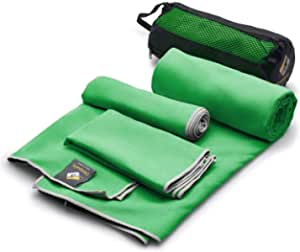 This time of year especially, you get wet on the trail. Let’s say you’re hiking a trail with multiple stream crossings and you don’t want to get your shoes wet, so you take them off and cross. Feels good, but you emerge with wet feet. Or you’re slogging up a steep hill, gaining 1,000 vertical feet in less than a mile: early on you develop a case of slog sweat that will blind you if it gets in your eyes. Thank heavens for the pack towel, that quick-drying swath of microfiber that dries those feet, wipes dry that brow and then dries uber fast dangling from your pack awaiting the next round. (They’re also great for helping you cool down: dip it in a nearby stream, wrap it around your neck, instant relief.) Cascade Designs makes an especially handy face towel (10” x 14”) that’s compact and efficient. Check it out here.
This time of year especially, you get wet on the trail. Let’s say you’re hiking a trail with multiple stream crossings and you don’t want to get your shoes wet, so you take them off and cross. Feels good, but you emerge with wet feet. Or you’re slogging up a steep hill, gaining 1,000 vertical feet in less than a mile: early on you develop a case of slog sweat that will blind you if it gets in your eyes. Thank heavens for the pack towel, that quick-drying swath of microfiber that dries those feet, wipes dry that brow and then dries uber fast dangling from your pack awaiting the next round. (They’re also great for helping you cool down: dip it in a nearby stream, wrap it around your neck, instant relief.) Cascade Designs makes an especially handy face towel (10” x 14”) that’s compact and efficient. Check it out here.
Black Diamond Talus gaiter
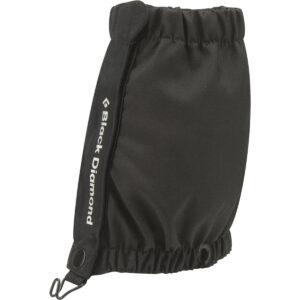 Constantly getting rocks and duff in your hiking shoe? Annoying on a short hike, blister causing on a longer venture. Nip those irritants in the bud with a pair of gaiters that slip over your shoe laces and neck of your shoe/boot, making it darn near impossible for stuff to get in. We like the Black Diamond Talus because it’s simple and does the job. Maybe it’s not waterproof, maybe it’s not the most stylish gaiter on the market. But it’s relatively inexpensive ($40 for a pair) and you can get them on and off quickly, a big plus in our book. Check ‘em out here.
Constantly getting rocks and duff in your hiking shoe? Annoying on a short hike, blister causing on a longer venture. Nip those irritants in the bud with a pair of gaiters that slip over your shoe laces and neck of your shoe/boot, making it darn near impossible for stuff to get in. We like the Black Diamond Talus because it’s simple and does the job. Maybe it’s not waterproof, maybe it’s not the most stylish gaiter on the market. But it’s relatively inexpensive ($40 for a pair) and you can get them on and off quickly, a big plus in our book. Check ‘em out here.
VELCRO straps
 It drives you nuts, loose gear jiggling around inside and outside your pack. A charging cord that explodes like a snake-in-a-can when freed from its ziplock, water sandals clanging around on the back of your pack, your quick-access water bottle dangling from your shoulder strap. Well, explode/clang/dangle no more, not when VELCRO straps can help contain the chaos. This pack of 12 straps includes 4 each of 8”, 12” and 18” lengths, perfect for your containment needs. Check ‘em out here.
It drives you nuts, loose gear jiggling around inside and outside your pack. A charging cord that explodes like a snake-in-a-can when freed from its ziplock, water sandals clanging around on the back of your pack, your quick-access water bottle dangling from your shoulder strap. Well, explode/clang/dangle no more, not when VELCRO straps can help contain the chaos. This pack of 12 straps includes 4 each of 8”, 12” and 18” lengths, perfect for your containment needs. Check ‘em out here.
TOGR: The pop-up tent
One of the things I like most about The Outdoor Gear Review is that the channel isn’t entirely about gear; it’s also about the experience, and how the gear can enhance the experience. And that experience isn’t always the same experience: sometimes it’s backpacking, sometimes it’s car camping, sometimes it’s overlanding. And sometimes it’s simply about getting out for the day and finding a nice spot to hunker down and kick back. That’s the case with the oddly misnamed “Camping in a Weird MASSIVE Korean Pop-up tent.” Oddly misnamed because the tent in question, the Idoogen Instant Camping Tent, is not, as host Luke acknowledges, “MASSIVE.” But that’s beside the point.
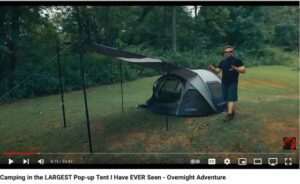 The point: While it may be massive, it is indeed a pop-up tent — simply take it out of the storage sack, toss it down and pops up on its own to become a tent. With a little effort on your part, you can erect the massive — this time the description applies — awning. Find a nice spot in the woods (not far from the car; it weighs 10.34 pounds), set it up in minutes, get out your camp chair and relax. Hang out under the awning and read, crawl into the tent and take a nap. When it’s time to leave, the tent packs up in a jiffy. You can stay the night, Luke says, but it’s claim to being waterproof is suspect; he promises to test that claim in an upcoming episode.
The point: While it may be massive, it is indeed a pop-up tent — simply take it out of the storage sack, toss it down and pops up on its own to become a tent. With a little effort on your part, you can erect the massive — this time the description applies — awning. Find a nice spot in the woods (not far from the car; it weighs 10.34 pounds), set it up in minutes, get out your camp chair and relax. Hang out under the awning and read, crawl into the tent and take a nap. When it’s time to leave, the tent packs up in a jiffy. You can stay the night, Luke says, but it’s claim to being waterproof is suspect; he promises to test that claim in an upcoming episode.
Still, for about $90, it’s a good deal if you just take it out for a day trip.
Check out the review here.
Roll those ticks away
Water? Check. Map? Check. Lint roller? Ch—
Lint Roller?
Worried about ticks? Then there’s one piece of gear you should start keeping in your pack: a lint roller. Yup, that wand with sticky tape on the end that you use to pluck everything from crumbs to cat hair from your clothes. Turns out a lint brush is pret

ty good at snatching ticks from clothing as well. Reach the end of the trail, pull the brush out of your pack and give yourself a good once over (especially your pant legs and socks) and look for little legs atwitch from a small orb. Caution: doesn’t work quite as well on bare skin, especially hairy bare skin.
Quilts vs. sleeping bags
 Are you a backpacker who’s used a sleeping bag since your first overnight, but have wondered about all the fuss over quilts? Today, we offer the takes of four of our favorite backpacking vloggers on the topic of quilts vs. sleeping bags. Spoiler alert: they all favor quilts. Click and learn:
Are you a backpacker who’s used a sleeping bag since your first overnight, but have wondered about all the fuss over quilts? Today, we offer the takes of four of our favorite backpacking vloggers on the topic of quilts vs. sleeping bags. Spoiler alert: they all favor quilts. Click and learn:
5 Ultralight (and in some cases cheap) gear lists
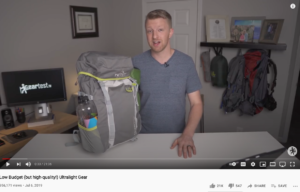 We love getting other hikers’ takes on gear, especially hikers who spend a lot of time on the trail. Today, we share five YouTubers who share their thoughts on lightweight — and in some cases, not-so-expensive — gear. We culled these five from a random collection of gear videos. Some didn’t make the cut because they weren’t as informative as they could have been (omitting details on cost and weight, for instance), some because we questioned their take on gear we were familiar with. The ones that follow we found to be quite insightful and helpful.
We love getting other hikers’ takes on gear, especially hikers who spend a lot of time on the trail. Today, we share five YouTubers who share their thoughts on lightweight — and in some cases, not-so-expensive — gear. We culled these five from a random collection of gear videos. Some didn’t make the cut because they weren’t as informative as they could have been (omitting details on cost and weight, for instance), some because we questioned their take on gear we were familiar with. The ones that follow we found to be quite insightful and helpful.
- “Low Budget (but high-quality!) Ultralight Gear,” GearTest Outdoors. 21 minutes, 46 seconds
- “GEAR I should have gotten as a BEGINNER backpacker,” Jeremiah Stringer Hikes, 21:02
- “My 2021 Thru-Hike Gear List – Benton MacKaye Trail,” Darwin onthetrail, 10:48
- “8.7 Pound Ultralight Backpacking Kit – Colorado Trail FKT,” Juice Hikes, 22:28
- “Ultralight Backpacking Gear List (9 lbs / 4kg),” Outdoor Adventures, 25:38
Media Ginger Runner on trail shoes
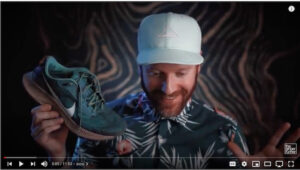 The Ginger Runner is all about trail running. And while what we hikers do may not be running (“anti-running,” perhaps), we do have one key thing in common with trail runners: we both need good shoes. You may have noticed that an increasing number of fellow hikers are in trail running shoes. For good reason: they’re lightweight, they generally have good grip, they’re built to minimize rubbing (and thus, blisters) and they’re generally pretty comfortable. Ah, but what to look for in a trail running shoe?
The Ginger Runner is all about trail running. And while what we hikers do may not be running (“anti-running,” perhaps), we do have one key thing in common with trail runners: we both need good shoes. You may have noticed that an increasing number of fellow hikers are in trail running shoes. For good reason: they’re lightweight, they generally have good grip, they’re built to minimize rubbing (and thus, blisters) and they’re generally pretty comfortable. Ah, but what to look for in a trail running shoe?
This is where The Ginger Runner excels. Host Ethan Newberry, in his 10- to 11-minute reviews gives you the information you need to know if a given shoe is a good fit (sorry). He gives lots of specs, and for those of us who scratch our head over specs, he explains how those specs translate into a positive trail experience. Best of all, through an arrangement with www.runningwarehouse.com, he’s able to review a wide array of shoes — and there are a whole lot out there. He’s also got several reviews of shoes that seem ideally suited for hiking — shoes with a bit more cushion that, I’ve personally found, take the foot pain out of a long day on the trail.
Dixie on hiking socks

Dixie of Homemade Wanderlust fame is a straight-shooter. Thus, we’ve chosen her take as the one to consider when embarking on a quest for good hiking socks. Her 16 minutes and 31 seconds on the topic is well worth the time. Check it out here.
Food: ‘The Hungry Hiker’
 Dinnertime on the trail can present a bit of a conundrum. On the one hand, you’re really hungry. On the other, you’re really tired and not keen on preparing a complex meal. There is the option of a dehydrated meal — provided you don’t mind spending around $10 per meal. Certainly there must be a good alternative? There is, and The Hungry Hiker shares it in her 11 minute and 46 second video, in which she puts together, quickly, 10 dinner options with common, inexpensive ingredients found at most grocery stores. Some are possibly things you’ve tried: instant mashed potatoes, or dehydrated rice or pasta. But it’s what she adds to them that will have you busy planning your next backpack trip just so you can have a trail dinner. THH also does breakfast, and any number of other meals. Find her oeuvre here, her dinner video here.
Dinnertime on the trail can present a bit of a conundrum. On the one hand, you’re really hungry. On the other, you’re really tired and not keen on preparing a complex meal. There is the option of a dehydrated meal — provided you don’t mind spending around $10 per meal. Certainly there must be a good alternative? There is, and The Hungry Hiker shares it in her 11 minute and 46 second video, in which she puts together, quickly, 10 dinner options with common, inexpensive ingredients found at most grocery stores. Some are possibly things you’ve tried: instant mashed potatoes, or dehydrated rice or pasta. But it’s what she adds to them that will have you busy planning your next backpack trip just so you can have a trail dinner. THH also does breakfast, and any number of other meals. Find her oeuvre here, her dinner video here.
Nature
Outside/In: ‘Who Owns the Sky?’
 There are things you think about on the trail — What makes the trees bloom? Am I on the right trail? Where’d I stash my snacks? — and things you don’t, such as, Who owns the sky? Who owns the sky? You likely don’t even know where to begin on this one. Certainly not with the medieval Roman notion of, “Whoever owns the the soil, it is theirs up to Heaven and down to Hell.” That’s where this podcast begins, and gets even more interesting from there. Give a listen here.
There are things you think about on the trail — What makes the trees bloom? Am I on the right trail? Where’d I stash my snacks? — and things you don’t, such as, Who owns the sky? Who owns the sky? You likely don’t even know where to begin on this one. Certainly not with the medieval Roman notion of, “Whoever owns the the soil, it is theirs up to Heaven and down to Hell.” That’s where this podcast begins, and gets even more interesting from there. Give a listen here.
Skills
How to waterproof a map
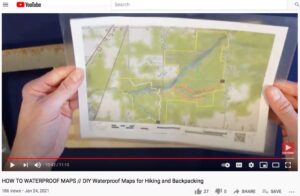 There are worse things than a soggy map, or WMS (Wet Map Syndrome), as Mike with Outdoor Chronicles calls it. But a soggy map is pretty bad, especially if you’re relying on said map to get you somewhere vital in the field — like back to the trailhead. Thus, it’s always good to have a waterproof map, and in this 11-minute video Mike shows you how to make that happen. His three suggestions:
There are worse things than a soggy map, or WMS (Wet Map Syndrome), as Mike with Outdoor Chronicles calls it. But a soggy map is pretty bad, especially if you’re relying on said map to get you somewhere vital in the field — like back to the trailhead. Thus, it’s always good to have a waterproof map, and in this 11-minute video Mike shows you how to make that happen. His three suggestions:
- Buy a map that’s already waterproof (in our experience they’re more water resistant than proof). Mike notes that if you like to custom-design your own maps with a service such as CalTopo, there are online waterproofing options available, pricey online options ($10 to $15 per map).
- Stick your paper map in a ziplock bag. A little more helpful.
- Laminate your own map. This is the suggestion we were hoping for, and the one Mike spends most of his time on. His method is cheap; you probably already have the basic tools — an X-Acto-type knife and a ruler or straight-edge — meaning your only investment is a role of clear contact paper: you can get a 36-foot roll of 12-inch paper for about $6.
Soggy maps no more, thanks to Mike with Outdoor Chronicles. Watch his video here.
‘Homemade Wanderlust’ on hitchhiking
 Dixie has hiked the Appalachian Trail, the Pacific Crest Trail and the Continental Divide Trail, and has piled up a bunch of experience along the way, experience she’s happy to share on her Homemade Wanderlust YouTube Channel. A 2019 post — “My Sketchiest Hitchhiking Story” — includes tips for hitchhiking while backpacking. It’s a curious combination: after hearing her describe the peculiar fellow who gave her and a backpacking friend a lift in Arizona, you won’t exactly be motivated to stick out your thumb. But if you are, stick around for her tips (in fact, you can bypass the sketchy guy segment by punching a button that lets you skip ahead). The tips will be helpful to any hiker keen to bum a ride; some good tips in the Comments section as well. Check it out here.
Dixie has hiked the Appalachian Trail, the Pacific Crest Trail and the Continental Divide Trail, and has piled up a bunch of experience along the way, experience she’s happy to share on her Homemade Wanderlust YouTube Channel. A 2019 post — “My Sketchiest Hitchhiking Story” — includes tips for hitchhiking while backpacking. It’s a curious combination: after hearing her describe the peculiar fellow who gave her and a backpacking friend a lift in Arizona, you won’t exactly be motivated to stick out your thumb. But if you are, stick around for her tips (in fact, you can bypass the sketchy guy segment by punching a button that lets you skip ahead). The tips will be helpful to any hiker keen to bum a ride; some good tips in the Comments section as well. Check it out here.
Outside: An update on pooping
 It’s funny: though we’ve been ridding our bodies of waste since Day 1, the rules for the disposal thereof in the wild keep changing. This week’s Outside Podcast episode is an informative and engaging update on the current rules for ditching doody in the wild. (It also spends a fair amount of time on the topic of dog poop, a topic we discuss in “Tips,” above.) In addition to updating us on the currently recommended procedures, there’s an entertaining history on the topic, especially pertaining to how the matter has been addressed on Grand Canyon raft trips. One caveat: The piece takes the typical western-centric approach to waste disposal — that is, how it’s best dealt with in an arid, rocky, exposed environment (as opposed to here in the wet, fertile, East). One more reason to listen: the piece is narrated by Paddy O’Connell, our favorite podcaster on topics outdoors. Check out “A Bold New Way to Poop in the Woods” here.
It’s funny: though we’ve been ridding our bodies of waste since Day 1, the rules for the disposal thereof in the wild keep changing. This week’s Outside Podcast episode is an informative and engaging update on the current rules for ditching doody in the wild. (It also spends a fair amount of time on the topic of dog poop, a topic we discuss in “Tips,” above.) In addition to updating us on the currently recommended procedures, there’s an entertaining history on the topic, especially pertaining to how the matter has been addressed on Grand Canyon raft trips. One caveat: The piece takes the typical western-centric approach to waste disposal — that is, how it’s best dealt with in an arid, rocky, exposed environment (as opposed to here in the wet, fertile, East). One more reason to listen: the piece is narrated by Paddy O’Connell, our favorite podcaster on topics outdoors. Check out “A Bold New Way to Poop in the Woods” here.
Drenalin Adventures: Bushcraft camping
Here’s something to think about: a winter tent with indoor heating. A lot of heating, via a woodstove. Obviously, this isn’t a nomadic backpacking option. Rather, it’s a basecamp option that includes curling up with a good book next to a wood stove fire — in your tent. Sounds like the best of both worlds, no? There are a lot of variations on this theme in the YouTube Uverse, one we especially like is “Solo Bushcraft Winter Camp: Cooking Over a Fire in Wet, Heavy Snow, Canvas Camp for Shelter,” from Drenalin Adventures. Host Scott talks just enough to explain what he’s doing — which is building his basecamp in a steady snow in the Canadian woods — but not too much to distract from the genius of his set-up and the beauty of the woods. You may never set up a canvas tent basecamp with a wood stove in a snowstorm, which makes it all the more fun to watch someone who has. Watch the video here.
Big Foot on the Neel Gap Shakedown
Bigfoot launched his YouTube channel in 2016 to vlog his thru-hike of the Appalachian Trail. He’s continued the channel to report on subsequent long hikes — including his 2017 thru-hike of the John Muir Trail and his unsupported FKT (Fastest Known Time) attempt on the Superior Hiking Trail — but also to provide advice to potential thru-hikers. His most recent video is on the shakedown offered by outfitter Mountain Crossings at Neel Gap, 32 miles into the Appalachian Trail (from the south, at Springer Mountain, Ga.). His focus in this video is on the the most unnecessary pieces of gear they find on backpackers. The report is surprising on two fronts: the stuff people think they need and they do need, but forget. One key takeaway: on a typical shakedown, Mountain Crossings helps a hiker shed 6 to 10 pounds from their pack. Watch the 17 minute and 35 second video here.
Too lifeless to hike? Read!
 Sometimes when you’re out of energy, you’re out of energy for a reason and not even a hike will help — or is a good idea. I’m thinking of the time I had mono when about all I could do was lift a book. Fortunately, I had the strength to at least do that. When the time comes for a full physical recharge, I turn to the Outside Canon, issued by the magazine in 2004. Herein you’ll find some of the best adventure tales ever told, including books focused on place (Isak Dinesen’s ‘Out of Africa”), on journeys you’d like to take (“The Great Railway Bazaar” and other adventures by Paul Theroux), on journeys you’re glad someone else took and lived to write about (Apsley Cherry-Garrard’s “The Worst Journey in the World,” a first-hand account of Robert Falcon Scott’s ill-fated Antarctica expedition in 1910-1913). A sea of adventures you can’t wait to settle in with, especially when you personally aren’t up for exploring yourself. Find the Outside Canon here.
Sometimes when you’re out of energy, you’re out of energy for a reason and not even a hike will help — or is a good idea. I’m thinking of the time I had mono when about all I could do was lift a book. Fortunately, I had the strength to at least do that. When the time comes for a full physical recharge, I turn to the Outside Canon, issued by the magazine in 2004. Herein you’ll find some of the best adventure tales ever told, including books focused on place (Isak Dinesen’s ‘Out of Africa”), on journeys you’d like to take (“The Great Railway Bazaar” and other adventures by Paul Theroux), on journeys you’re glad someone else took and lived to write about (Apsley Cherry-Garrard’s “The Worst Journey in the World,” a first-hand account of Robert Falcon Scott’s ill-fated Antarctica expedition in 1910-1913). A sea of adventures you can’t wait to settle in with, especially when you personally aren’t up for exploring yourself. Find the Outside Canon here.
Health & Safety
‘Patient Zero’ podcast on Lyme Disease
 If you spend much time outdoors, and we suspect you do, you’re no doubt interested in ticks and the havoc the little blood-suckers can cause. Lyme Disease, for instance. Is it true, you may wonder, that you can’t get infected if you get the bugger off you within 24 hours? (Not necessarily.) The name of the podcast, “patient zero” — isn’t that the term given the first person known to contract a given disease? (No. That person is actually referred to as the “index case.”) And the iconic red bullseye — isn’t that a true sign you’ve got Lyme Disease? (Again, no. You can get Lyme without getting the bullseye.) “Patient Zero” comes from New Hampshire Public Radio, which also gives us the wonderful “Outside/In” podcast. In fact, “Patient Zero” is hosted by Taylor Quimby, a senior producer for “Outside/In” (and senior producer of the also quite good serialized crime podcast, “Bear Brook”). “Patient Zero” is a fascinating look at a disease that went misdiagnosed for years, and a disease that’s not fully understood now. Four episodes are out so far; check ‘em out here.
If you spend much time outdoors, and we suspect you do, you’re no doubt interested in ticks and the havoc the little blood-suckers can cause. Lyme Disease, for instance. Is it true, you may wonder, that you can’t get infected if you get the bugger off you within 24 hours? (Not necessarily.) The name of the podcast, “patient zero” — isn’t that the term given the first person known to contract a given disease? (No. That person is actually referred to as the “index case.”) And the iconic red bullseye — isn’t that a true sign you’ve got Lyme Disease? (Again, no. You can get Lyme without getting the bullseye.) “Patient Zero” comes from New Hampshire Public Radio, which also gives us the wonderful “Outside/In” podcast. In fact, “Patient Zero” is hosted by Taylor Quimby, a senior producer for “Outside/In” (and senior producer of the also quite good serialized crime podcast, “Bear Brook”). “Patient Zero” is a fascinating look at a disease that went misdiagnosed for years, and a disease that’s not fully understood now. Four episodes are out so far; check ‘em out here.
‘The Call of the Void’
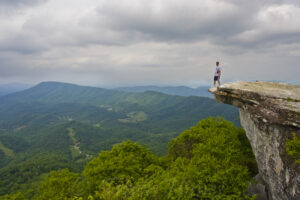 You probably recognize the iconic Virginia location on the right: McAfee Knob. And if you’ve hiked there, you’ve likely had your picture taken at knob’s edge. Like this group.
You probably recognize the iconic Virginia location on the right: McAfee Knob. And if you’ve hiked there, you’ve likely had your picture taken at knob’s edge. Like this group.
So why’s the guy on the end sitting down?
He’s trying to resist “The Call of the Void,” a k a “high place phenomenon.” According to psychologist Jennifer Hammes writing in “The Journal of Affective Disorders,” HPL is “An urge to jump [that] affirms the urge to live..” Messed up survival wiring, in short. And about a third of us suffer from it.
That urge is the focus of the latest podcast from New Hampshire Public Radio’s Outside/In podcast, and it’s a good one. If you’ve ever had this urge, you’ll find it especially interesting — and a bit of a relief because no, we are not crazy.
Check out the podcast here.
Out Alive on survival myths
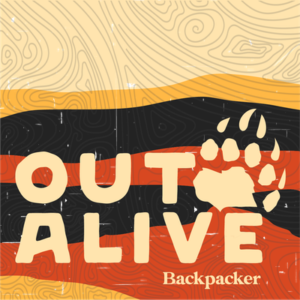 The Out Alive podcast from Backpacker via Outside tells a story of survival every other week. This bi-week, they divert to discuss three common myths of survival. You may well know these as myths, but especially in these times of free-for-all social media, it’s good to be reminded of what’s real and what’s not. In this episode, Jessica Krebs, founder of O.W.L.S Skills, a Colorado-based survival skills program for women, addresses three common myths: sucking the venom from a snakebite, building a survival fire, and drinking your pee. It’s a quick — about 10 minutes — listen and valuable information. Give a listen here.
The Out Alive podcast from Backpacker via Outside tells a story of survival every other week. This bi-week, they divert to discuss three common myths of survival. You may well know these as myths, but especially in these times of free-for-all social media, it’s good to be reminded of what’s real and what’s not. In this episode, Jessica Krebs, founder of O.W.L.S Skills, a Colorado-based survival skills program for women, addresses three common myths: sucking the venom from a snakebite, building a survival fire, and drinking your pee. It’s a quick — about 10 minutes — listen and valuable information. Give a listen here.
Another benefit of trails
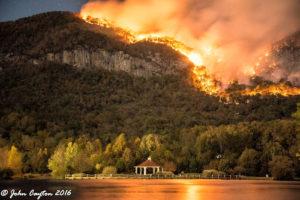
You know trails are a godsend; it’s not like you need additional proof to convince you of their worth. Here’s some anyway: according to American Trails, “Trails connect suburban and rural communities to wild places, and they can play an important role in landscape resilience, as wildfire becomes more frequent in the wildland-urban interface (WUI) where homes are increasingly being built.” So trails can help prevent wildfires? Or at least help mitigate their impact? Apparently.
“A trail system can be part of a wildfire management strategy and may serve as emergency egress routes before or during a fire,” according to the non-profit trails advocacy group. Further, “After the fire, trails in burnt-over landscapes may help visitors learn about fire recovery, and the impact of wildfire on watershed health.”
Read more about the role of trails and resiliency here.
Lifestyle
Media ‘Outside’ on invitations
If you subscribe to the parallel universe theory, you’ve know doubt wondered about those roads not taken. About the time you declined an invitation to summit Mount Mitchell in January, in the snow. Or the time you passed on a chance at a week on the AT. Or that day you stubbornly sat in the office and stewed as your friends played hooky and spent a glorious fall day in the St. Mary’s Wilderness. Invitations proffered, invitations passed. But what about those invitations that are embraced? That’s the topic of the latest podcast from Outside. In this episode, it’s all about the invitations that were accepted, and how an opportunity seized changed lives. Give a listen here.
‘Something Wild’
I always feel better going to bed knowing something I didn’t know when I got up. I’ve been going to bed happier since discovering the Something Wild podcast from New Hampshire Public Radio. Once a week, Something Wild delivers a quick — 4 to 5 minutes — bit of information about the natural world that not only makes me sleep better, but gives me something to think about until then. The latest installment, for instance, is about birdsong, and why the avian rhapsodies of fall make us wistful for spring. Check out Something Wild here.
‘Backcountry creativity,’ on BPL podcast
You like the idea of somehow chronicling your adventures, but how? Keeping a journal — written, drawn, or both — is especially appealing, but you’ve got so many questions before getting started. What kind of journal should I use, waterproof or regular? And lined on blank pages? Or a grid? In this week’s Backpacking Light Podcast, hosts Ryan and Andrew share their experiences of writing, drawing and painting on the trail. Just the boost you need to get you creatively into the fall backcountry season. Give a listen here.
The Outdoor Gear Review: ‘A Quiet Place Adventures’
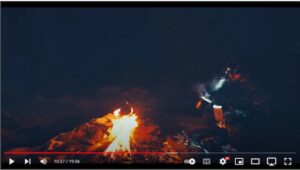 On some level, you’re aware of the sounds of the woods: a twig snapping, that last frog of the season croaking in the distance, a breeze rustling the leaves far above. You likely hear them, but you don’t take the time to appreciate them. That’s the beauty of “A Quiet Place Adventures,” a new channel from The Outdoor Gear Review. The segments run 15 to 20 minutes, and in many ways resemble TOGR’s other productions. The one difference? Host Luke says nary a word. You hear him chopping wood, feeding a campfire, boiling water for coffee. But you never hear him speak. It’s a good opportunity to enjoy a meaningful, but often neglected, element of the outdoor experience. Check it out here.
On some level, you’re aware of the sounds of the woods: a twig snapping, that last frog of the season croaking in the distance, a breeze rustling the leaves far above. You likely hear them, but you don’t take the time to appreciate them. That’s the beauty of “A Quiet Place Adventures,” a new channel from The Outdoor Gear Review. The segments run 15 to 20 minutes, and in many ways resemble TOGR’s other productions. The one difference? Host Luke says nary a word. You hear him chopping wood, feeding a campfire, boiling water for coffee. But you never hear him speak. It’s a good opportunity to enjoy a meaningful, but often neglected, element of the outdoor experience. Check it out here.
BPL podcast on mental health
 We hear a lot about the mental health benefits of being outdoors: that it reduces stress, can improve your mood, it’s relaxing, detached from electronics it can give your brain a chance to renew. On some level we know this to be the case: spend an afternoon on the trail and who doesn’t feel better? But how really tuned in to how we individually benefit mentally from being outside? In Episode 34 of the Backpacking Light Podcast, hosts Andrew and Ryan discuss how being outside personally affects them.
We hear a lot about the mental health benefits of being outdoors: that it reduces stress, can improve your mood, it’s relaxing, detached from electronics it can give your brain a chance to renew. On some level we know this to be the case: spend an afternoon on the trail and who doesn’t feel better? But how really tuned in to how we individually benefit mentally from being outside? In Episode 34 of the Backpacking Light Podcast, hosts Andrew and Ryan discuss how being outside personally affects them.
It’s insightful because it shows that the impact of being outdoors varies from person to person. For instance, Ryan discusses how following the standard advice of being active for 30 minutes a day just doesn’t cut it for him. Rather, fewer, longer stretches of being on the trail have a more significant, long-lasting impact. I can relate; while getting out and stretching the legs for a few minutes in the morning and again in the afternoon is helpful, it’s those longer stretches — a couple hours or more — that really clear out the cobwebs and open the doors for a couple days of clearer creative thinking.
Outside Podcast: ‘A Pro Climber’s Coming Out Story’
 This summer, the Outside Podcast is celebrating one of the main things we missed in 2020: connecting with people. Specifically, the podcast is looking at how outdoor experiences enhance (for the most part) our relationships. Think about it: on a group hike, you can go from strangers to intimates in a couple of hours. A weekend backpack trip? Forget about it.
This summer, the Outside Podcast is celebrating one of the main things we missed in 2020: connecting with people. Specifically, the podcast is looking at how outdoor experiences enhance (for the most part) our relationships. Think about it: on a group hike, you can go from strangers to intimates in a couple of hours. A weekend backpack trip? Forget about it.
The first episode in the Outside series is about professional climber Jordan Cannon’s publicly coming out. But that’s only part of the story; Cannon’s coming out is heavily intertwined with the relationship forged with a new climbing partner, Mark Hudon. Some of Cannon’s fellow climbers thought it odd that their 24-year-old friend would team with 62-year-old Hudon. How’s that going to help you? they wanted to know. In a variety of ways, it turned out, including having the supportive father figure he didn’t have growing up. A good story; we look forward to hearing more in the series. Give a listen here.
‘Sea Hunt’
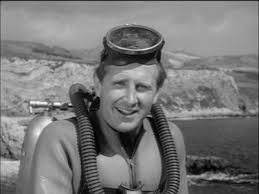 One night recently when I had the house to myself, I was noodling around on YouTube when I came upon “Sea Hunt,” and not just one episode — all four seasons (155 episodes). Back in the 50s and 60s, there were three networks and thus, three choices for what the family could watch at any given time; my family watched “Sea Hunt,” the story of ex-Navy frogman Mike Nelson (Lloyd Bridges, The Dude’s dad) who made a living as a freelance scuba diver. Underwater adventure was a new frontier at the time; scuba diving was little more than a decade old when the show began. Every time Mike went under water — whether he was rescuing a Navy pilot trapped in his plane or diffusing a nuclear bomb — it was an adventure. To an adventure-loving kindergartner whose world was confined to his backyard, it was the most anticipated half hour of the week. Even today, the black-and-white episodes free of special effects offer some of the best adventure escapism around. See for yourself, here.
One night recently when I had the house to myself, I was noodling around on YouTube when I came upon “Sea Hunt,” and not just one episode — all four seasons (155 episodes). Back in the 50s and 60s, there were three networks and thus, three choices for what the family could watch at any given time; my family watched “Sea Hunt,” the story of ex-Navy frogman Mike Nelson (Lloyd Bridges, The Dude’s dad) who made a living as a freelance scuba diver. Underwater adventure was a new frontier at the time; scuba diving was little more than a decade old when the show began. Every time Mike went under water — whether he was rescuing a Navy pilot trapped in his plane or diffusing a nuclear bomb — it was an adventure. To an adventure-loving kindergartner whose world was confined to his backyard, it was the most anticipated half hour of the week. Even today, the black-and-white episodes free of special effects offer some of the best adventure escapism around. See for yourself, here.
‘Camping with Steve’
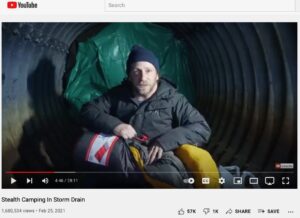 To those of you who aren’t into camping because of the sacrifice and discomfort it demands, I point you to “Camping with Steve.” Steve is Steve Wallis of Edmonton, Alberta, Canada, and his approach to adventure is to embrace it while not necessarily escaping the conveniences of home. In the first video of his that I watched, “Cheap Hammock Storm Camping,” he not only camps in a storm with fresh-out-of-the-pack budget hammock gear, he also cooks a hamburger soup that, by the looks of it, could feed 20 (he’s solo on this trip). In a salute to comfy summer camping (“Air Conditioned Insulated Tent Camping”), he uses a portable air conditioner to cool an ice fishing shelter. He’s into stealth camping, as in “Abandoned Campground Stealth Camping,” and “Urban Stealth Camping Disguised As Businessman.” In short, Steve puts a spin on camping and adventure that you likely haven’t thought of. Steve offers a good way to revisit your view of camping going into the popular fall camping season. See more of his work here
To those of you who aren’t into camping because of the sacrifice and discomfort it demands, I point you to “Camping with Steve.” Steve is Steve Wallis of Edmonton, Alberta, Canada, and his approach to adventure is to embrace it while not necessarily escaping the conveniences of home. In the first video of his that I watched, “Cheap Hammock Storm Camping,” he not only camps in a storm with fresh-out-of-the-pack budget hammock gear, he also cooks a hamburger soup that, by the looks of it, could feed 20 (he’s solo on this trip). In a salute to comfy summer camping (“Air Conditioned Insulated Tent Camping”), he uses a portable air conditioner to cool an ice fishing shelter. He’s into stealth camping, as in “Abandoned Campground Stealth Camping,” and “Urban Stealth Camping Disguised As Businessman.” In short, Steve puts a spin on camping and adventure that you likely haven’t thought of. Steve offers a good way to revisit your view of camping going into the popular fall camping season. See more of his work here
Motivation for fall
In addition to this week’s more tolerable temperatures, for additional motivation to get up for fall I turned to my favorite outdoor YouTubers. Granted, it’s not fall on YouTube. But it has been, and there are plenty of archive videos to get you ready for the season. Since I was looking for a taste of fall in my backyard of North Carolina, I turned to Luke with The Outdoor Gear Review. Luke spends a fair amount of time exploring the Southern Appalachians near his home in northwestern North Carolina. Just the place I love to explore, especially in fall.
Especially in late fall, as it turns out. The video I selected, “Windy Mountain Fall Day Camp” from four years back, appears to have been shot in late November/early December: the trees at 3,000 feet, are stripped clean of leaves, it’s blustery, the sky has that pre-winter indifference. Luke, dressed in fleece, tells us it’s 42 degrees. He stops for coffee, lunch and a chat. The video is just 15 minutes, just long enough to further get you onboard for the season ahead.
